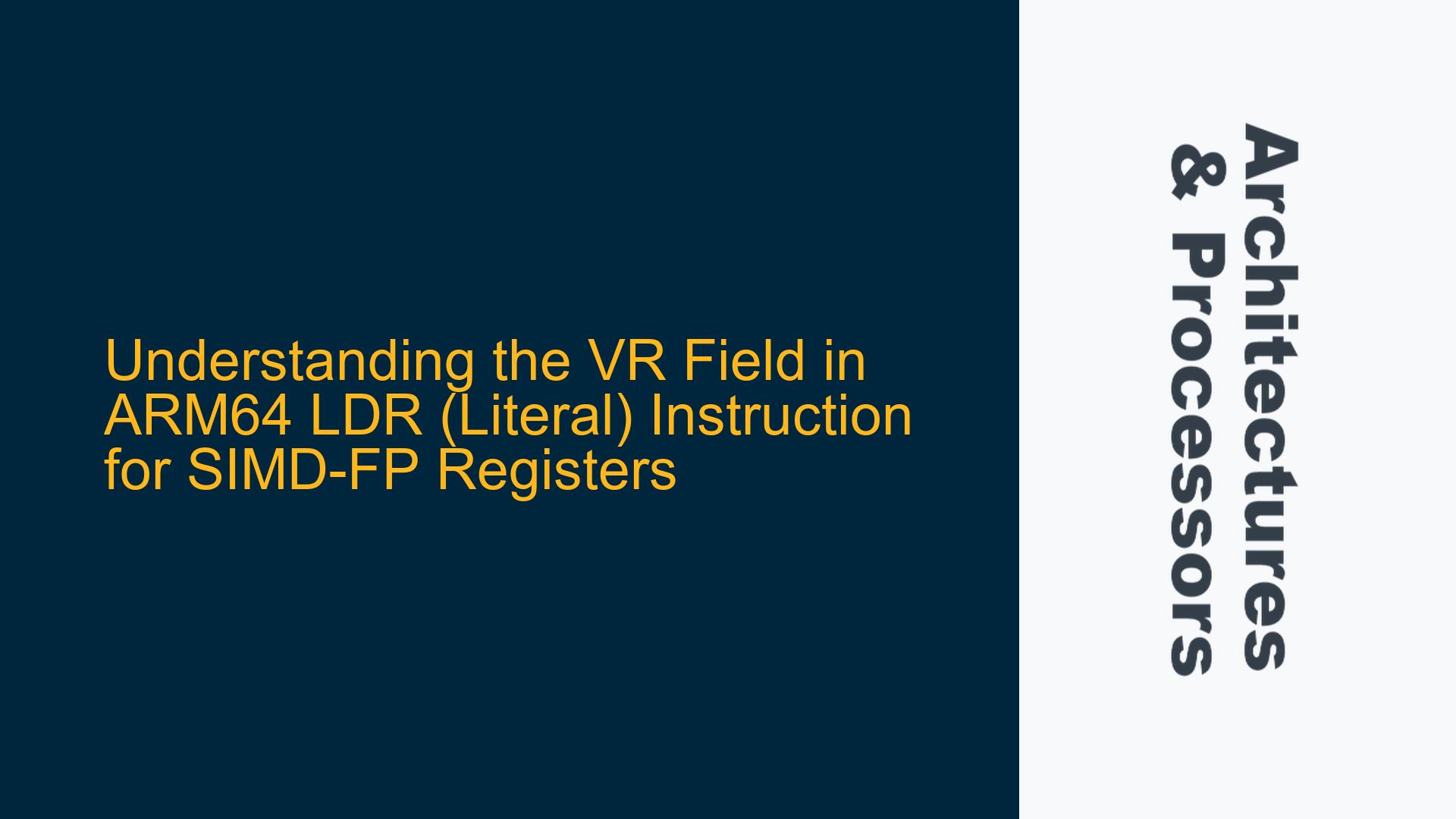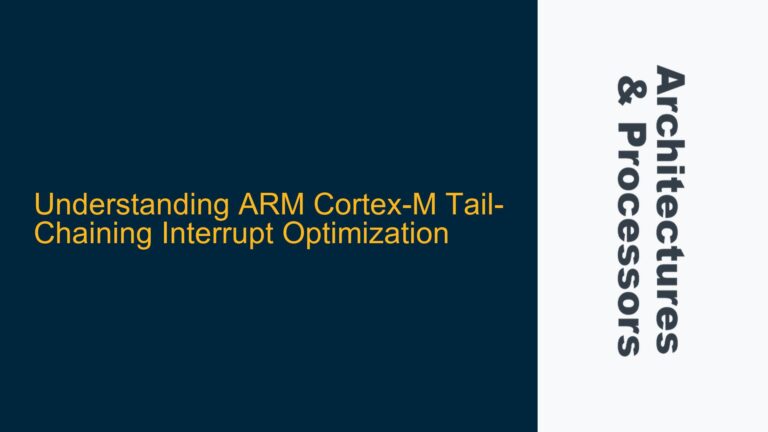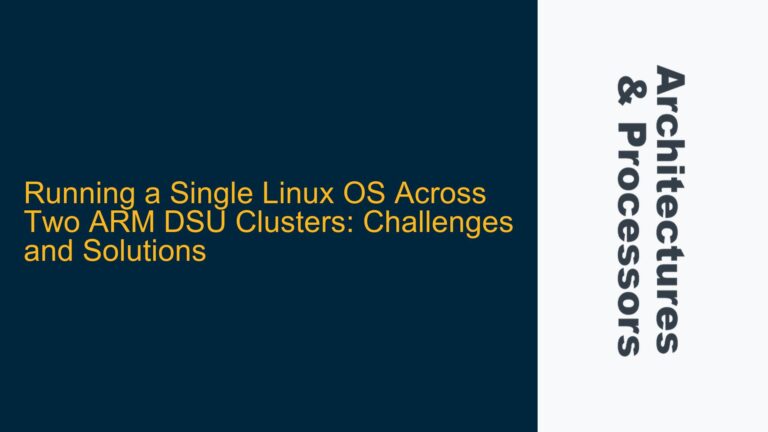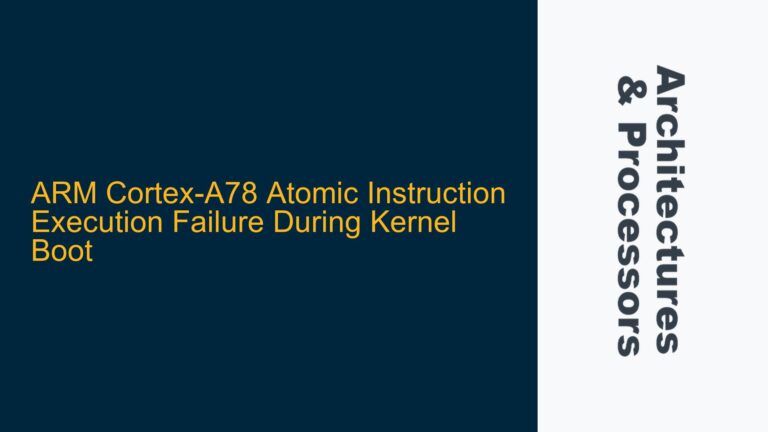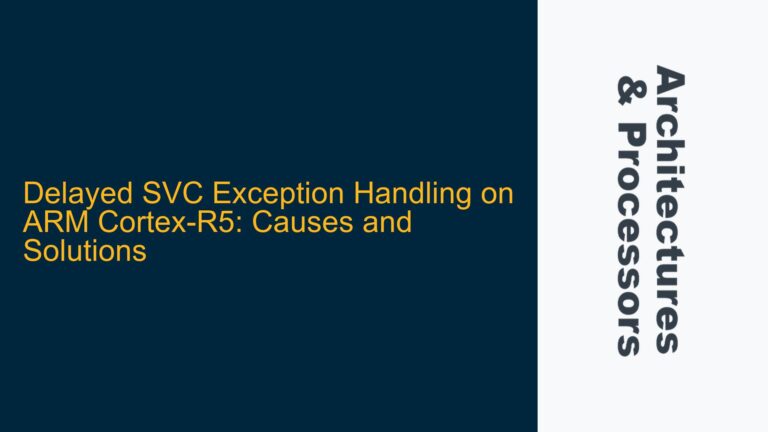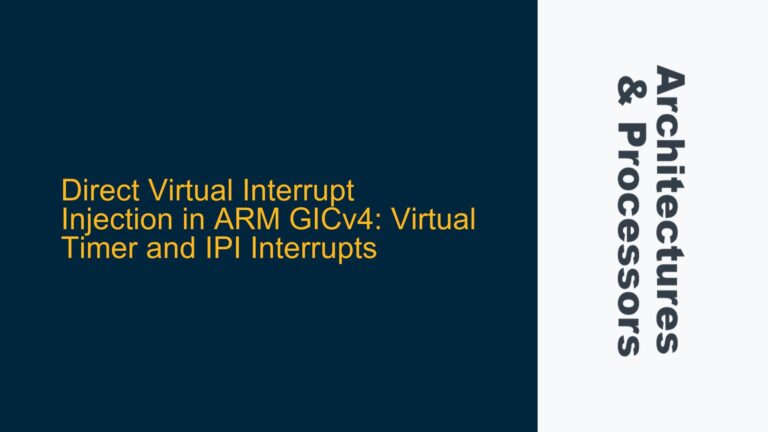ARM64 LDR (Literal) Instruction and the VR Field in SIMD-FP Context
The ARM64 instruction set architecture (ISA) is a rich and complex ecosystem designed to cater to a wide range of computational needs, from general-purpose processing to specialized tasks like Single Instruction Multiple Data (SIMD) and Floating-Point (FP) operations. One of the key instructions in this architecture is the LDR (literal) instruction, which is used to load a value from memory into a register. However, when dealing with SIMD and FP registers, the LDR (literal) instruction includes a field labeled "VR" at bit 26, which has raised questions about its purpose and functionality.
The VR field is not explicitly defined in the ARM documentation, leading to ambiguity for developers and engineers working with the ARM64 ISA. This field is particularly relevant when dealing with SIMD-FP registers, as it distinguishes between standard register loads and SIMD-FP register loads. Understanding the VR field is crucial for correctly implementing and optimizing code that leverages SIMD and FP operations, as misinterpretation can lead to incorrect behavior, performance bottlenecks, or even system crashes.
The VR field’s presence in the LDR (literal) instruction for SIMD-FP registers suggests that it plays a role in differentiating between standard register loads and SIMD-FP register loads. This differentiation is essential because SIMD-FP registers have different characteristics and requirements compared to standard registers. For instance, SIMD-FP registers often handle multiple data elements simultaneously, requiring specific alignment and memory access patterns. The VR field likely serves as a flag or indicator that informs the processor about the type of register being accessed, ensuring that the correct memory access and data handling mechanisms are employed.
Vector-Register (VR) Field: Implications and Potential Causes of Misinterpretation
The VR field in the ARM64 LDR (literal) instruction is a single-bit field located at bit 26. When this bit is set, it indicates that the instruction is intended for loading data into a SIMD-FP register. Conversely, when the bit is cleared, the instruction is meant for standard registers. This distinction is critical because SIMD-FP registers and standard registers have different architectural behaviors and requirements.
One of the primary reasons for the confusion surrounding the VR field is the lack of explicit documentation. While the ARM Architecture Reference Manual provides detailed descriptions of various instructions and their fields, the VR field is not explicitly named or explained. This omission can lead to misinterpretation, especially for developers who are not intimately familiar with the ARM64 ISA. Without a clear understanding of the VR field, developers might incorrectly assume that the LDR (literal) instruction behaves the same way for both standard and SIMD-FP registers, leading to subtle bugs and performance issues.
Another potential cause of misinterpretation is the similarity between the LDR (literal) instruction for standard registers and the LDR (literal) instruction for SIMD-FP registers. Both instructions share the same mnemonic and general format, but the presence of the VR field introduces a critical difference. Developers who are accustomed to working with standard registers might overlook this distinction, resulting in incorrect code that fails to leverage the full capabilities of SIMD-FP registers.
Furthermore, the VR field’s role in memory access patterns and data alignment cannot be understated. SIMD-FP registers often require specific alignment to ensure efficient data processing. The VR field likely influences how the processor handles memory access, ensuring that data is loaded into SIMD-FP registers in a manner that optimizes performance. Misunderstanding or ignoring the VR field can lead to suboptimal memory access patterns, reducing the effectiveness of SIMD-FP operations and potentially causing data corruption or system instability.
Correctly Utilizing the VR Field in ARM64 LDR (Literal) Instructions
To correctly utilize the VR field in ARM64 LDR (literal) instructions, developers must first understand its purpose and implications. The VR field serves as a flag that distinguishes between standard register loads and SIMD-FP register loads. When the VR bit is set, the instruction is intended for SIMD-FP registers, and when it is cleared, the instruction is for standard registers. This distinction is crucial for ensuring that the correct memory access and data handling mechanisms are employed.
When working with SIMD-FP registers, developers must ensure that the VR bit is set in the LDR (literal) instruction. This can be achieved by explicitly setting bit 26 in the instruction encoding. For example, when writing assembly code, developers should use the appropriate syntax to indicate that the instruction is intended for SIMD-FP registers. This might involve using specific mnemonics or modifiers that are recognized by the assembler and result in the correct instruction encoding.
In addition to setting the VR bit, developers must also pay attention to memory alignment and access patterns when working with SIMD-FP registers. SIMD-FP registers often handle multiple data elements simultaneously, requiring that data be aligned to specific boundaries. The VR field likely influences how the processor handles memory access, ensuring that data is loaded into SIMD-FP registers in a manner that optimizes performance. Developers should ensure that data is properly aligned and that memory access patterns are optimized for SIMD-FP operations.
To avoid common pitfalls, developers should consult the ARM Architecture Reference Manual and other relevant documentation to gain a deeper understanding of the LDR (literal) instruction and its various fields. While the VR field might not be explicitly named, its role can be inferred from the context and behavior of SIMD-FP instructions. By carefully studying the documentation and experimenting with different instruction encodings, developers can gain a better understanding of how the VR field influences instruction execution and optimize their code accordingly.
In conclusion, the VR field in the ARM64 LDR (literal) instruction is a critical component that distinguishes between standard register loads and SIMD-FP register loads. Understanding and correctly utilizing this field is essential for developers working with SIMD and FP operations on ARM64 processors. By setting the VR bit appropriately and paying attention to memory alignment and access patterns, developers can ensure that their code leverages the full capabilities of SIMD-FP registers, resulting in optimized performance and reliable system behavior.
